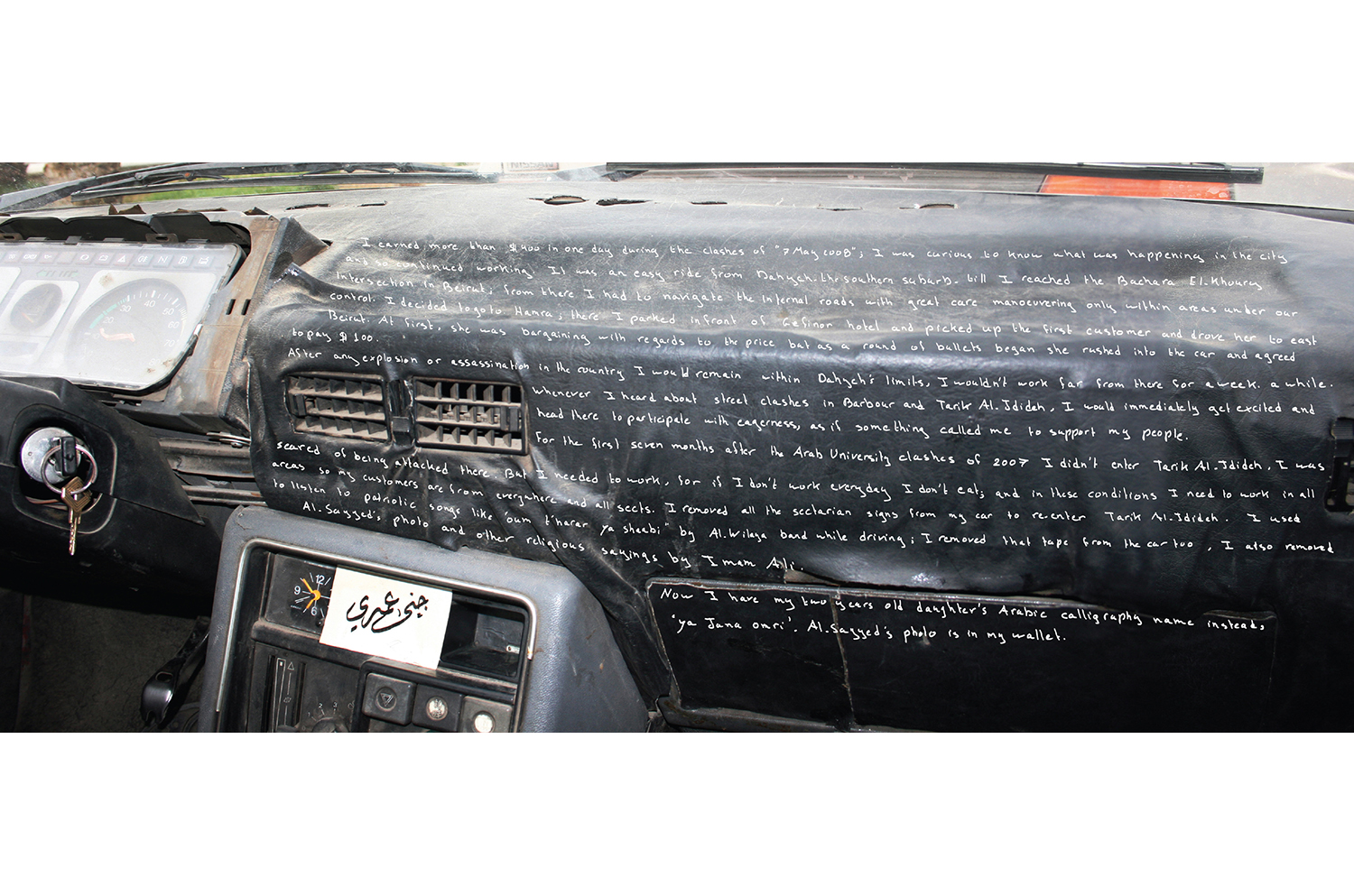THIS IS HOW STORIES OF CONFLICT CIRCULATE AND RESONATE
Film 12’, audio-visual piece Beirut, 2011
This installation followed the story of a taxi driver who played loud ‘patriotic’ music whilst driving through two neighbourhoods of Beirut that opposed its political and religious content; it included a critical response to the driver’s actions through an audio-visual piece and a film that negotiated the borders of sound.
Hafeda investigated the sonic environment through riding in a taxi and walking around the neighbourhoods to explore the boundaries between sound and image, and the practice of hearing and seeing in the context of an urban space. Video recordings were made in taxi drivers’ cars to document the dashboard and sounds overheard from outside the vehicle, as well as those heard from within, such as the drivers’ conversations and the media channels that their radios were tuned into. Also examined was whether these discourses changed depending on the area they traversed through. A walking journey with a hidden audio recorder was used to document the sounds heard on the pavements, coming from pedestrians, shops, cars and private residences.
The film, Look: Someone is Filming, and the audio-visual piece, Presence and Absence created from this process proposed the bordering practice of ‘translating’: the immateriality of sonic borders. This translation was a material process between sound and image and a linguistic one between Arabic and English. Translation removed these sounds from their original spatial and temporal context and collapsed time–space distances between them. This was part of Negotiating Conflict series.
Exhibited at ‘Cities Methodologies 2011’, Slade Research Centre, University College London (UCL), London
Supported by UCL Graduate School and the Bartlett School of Architecture






